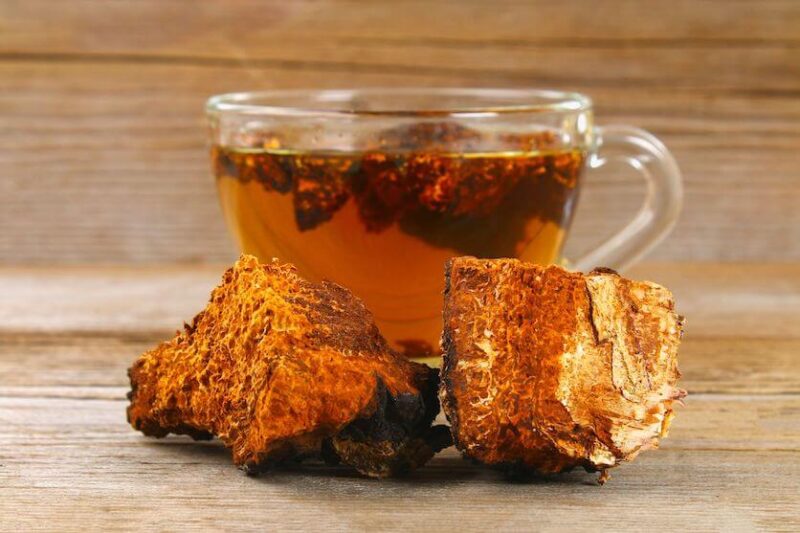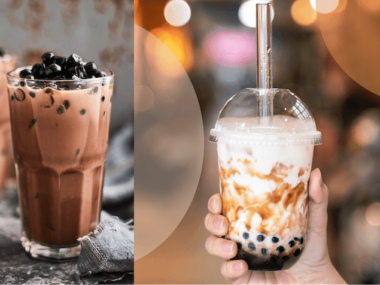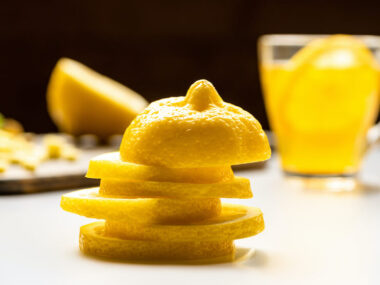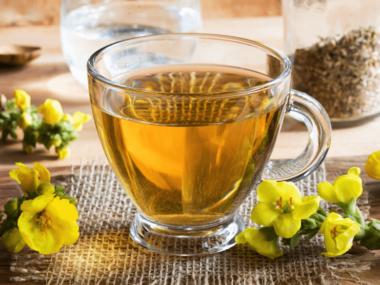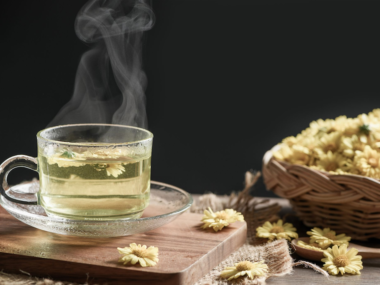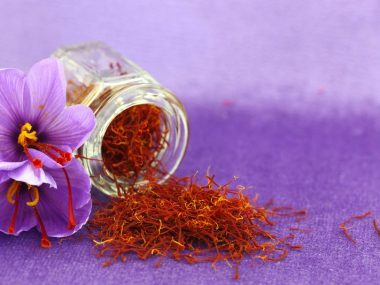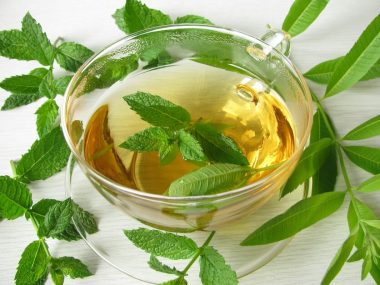Just when you think the world of tea drinking can’t get any more intriguing, along comes a tea that opens the door to something completely new. However, this door may lead to the unexpected, especially if the wrong chunk of fungi makes its way into your teacup! So here’s what you need to know about drinking mushroom tea.
Table of Contents
What Is Mushroom Tea?
Mushroom tea is simply a black or green brewed tea with mushrooms added. Edible, non-toxic mushrooms are generally used to make tea. However, some have concocted hallucinogenic mushroom teas from mushrooms considered toxic and poisonous. Some mushroom tea drinkers prefer to brew tea from mushrooms minus black or green tea. In such cases, this tea would become a tisane (herbal tea) and not a true tea.
Common Types Of Mushroom Teas
Not every mushroom tastes the same when brewed. Here’s a quick line-up of the fungi that pair well with other teas1
Reishi Mushroom Tea
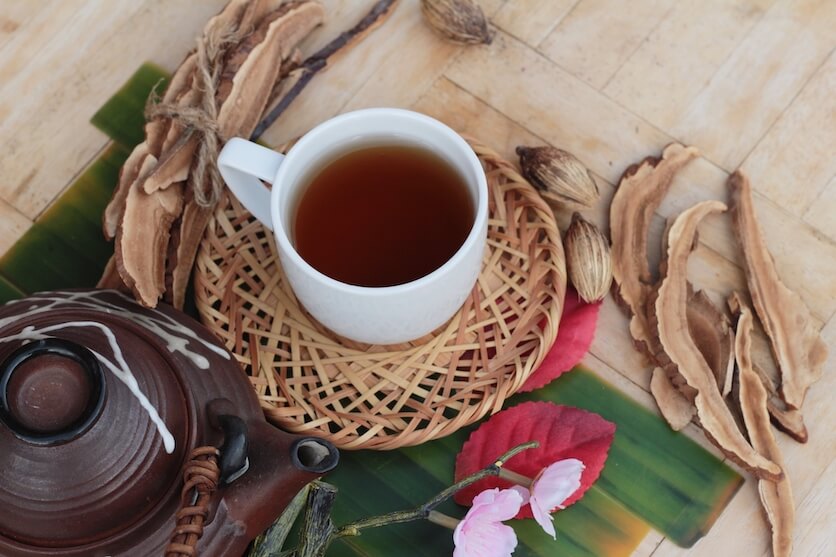
Reishi mushroom tea is made from a mushroom known as lingzhi (Ganoderma lingzhi), which grows on dead trees and wood. These mushrooms are orangish in color and are known for their glossy exterior. They are native to Asia, where traditional medicine uses them to treat various ailments.
Chaga Mushroom Tea
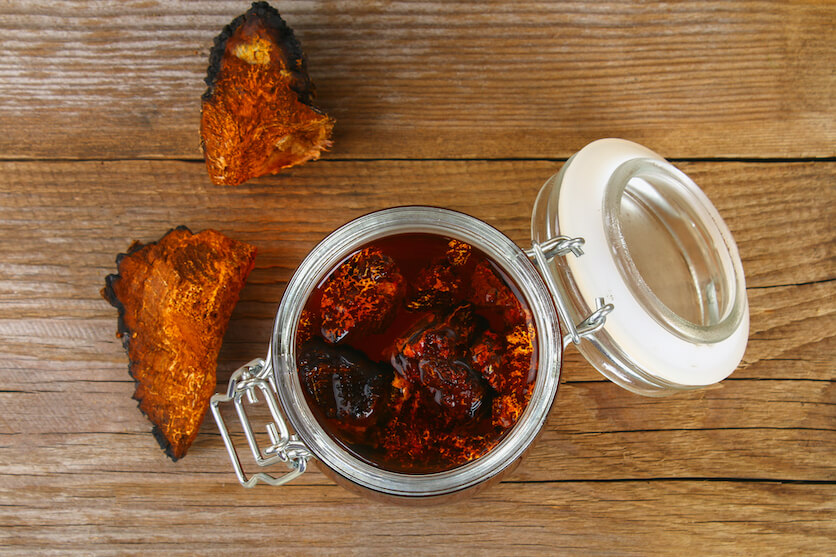
Chaga mushroom tea is made from eponymous chaga mushrooms (Inonotus obliquus), which are only found in the northern hemisphere on birch trees. These mushrooms look like clusters of dirt. But the flesh of the mushroom is a vibrant orange.
Kombucha Mushroom Tea
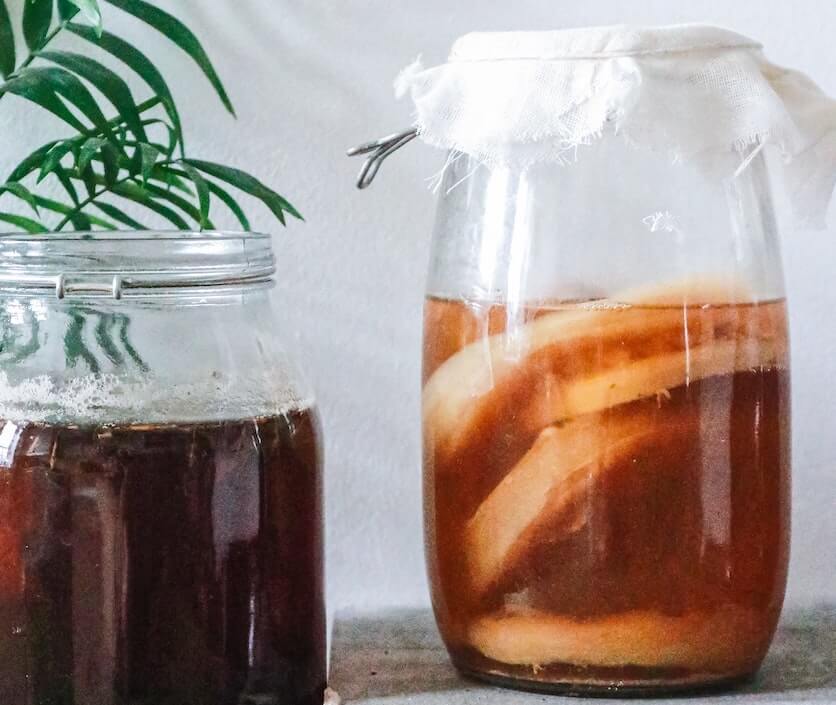
Kombucha is not a tea made with mushrooms. It is, however, called a ‘mushroom’ tea because of the mushroom-looking bacteria/yeast cellulose form that is added to tea to cause fermentation.
The ingredients that go into making this tea include tea (black or green,) sugar, yeast, and added bacteria which is called SCOBY (symbiotic culture of bacteria and yeast.) SCOBY looks like a round light brown piece of rubber. The fermenting tea sits for anywhere from 7 to 30 days to brew. Brewing longer times results in a stronger vinegar flavor. Once the fermentation/brew time is done, the SCOBY is removed, and the remaining liquid of the tea is consumed.
What Does Mushroom Tea Taste Like?
It’s tough to narrow down precisely what mushroom tea tastes like because each species of mushrooms have different flavors. A species of mushroom that grows on a tree may have a nutty flavor, whereas another that grows in the soils of heavy forests may have a bitter, earthy taste.
Understanding More About Mushrooms
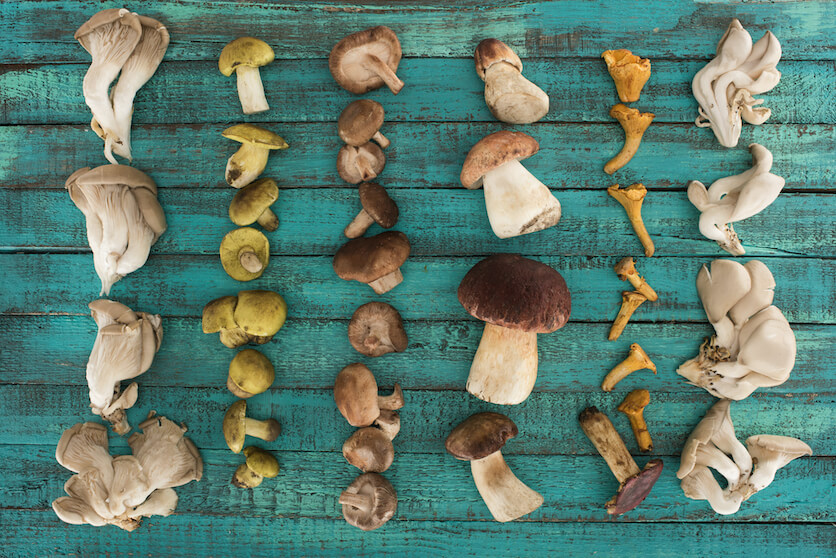
Mushrooms are classified as fungi that belong to the Agaricales order. This order contains gilled mushrooms (also known as eugarics.) To give you an idea of just how broad and vast the mushroom world is, there are 413 different genera of mushroom fungi followed by 13,000 species.
Please note that we are not experts in mushrooms, nor do we have the expertise to advise or make recommendations. Before consuming any mushroom or mushroom tea, consult with your healthcare provider.
The Uncertainty Of Safe vs. Poisonous Mushrooms
Because of such a wide diversity of mushrooms, many people misidentify mushrooms when picking them to eat or make tea. There are numerous species of mushrooms so poisonous causing serious side effects and even death. Contrastly, there are also many safe (edible) species of mushrooms you can enjoy.
Unless you are well-versed in identifying various mushroom species, it’s best to either learn or avoid it altogether. There are a few ways to know right off the bat if a mushroom is poisonous or not. Before we dig into that, we must first understand more about the parts of a mushroom.
Anatomy Of A Mushroom
Mushrooms are composed of several parts. Each part plays a vital role in identifying poisonous and non-poisonous mushrooms apart.
Cap
The cap is the top of the mushroom and is shaped like an umbrella, or if turned upwards, it resembles a cup. The cap’s function is to shield the part of the mushroom that contains the spores (gills.) Some mushroom caps have scales (or wart-like) spots.
Gills (underside of the cap)
Gills are slit-like shapes on the underside of the cap. Between each of the openings are thousands of spores which, when released, they go on to form more mushrooms.
Stem
Stems are what holds the cap up as a support. Some stems are smooth, while others have rings.
Volva
At the bottom end of the stem is the volva, which is the remnant of a membrane left behind as the stem began to grow upwards. Many times, the volva is below the soil.
Poisonous Mushroom Characteristics
Poisonous mushrooms can cause a host of serious side effects leading to organ failure and even death. Toxins within the mushroom itself are responsible for how our body reacts after ingestion.
A few things to look for to quickly identify a toxic mushroom include:
- Red cap/stem
- Scales on cap (raised dots/wart-like spots)
- White gills
- Ring around the stem
- Stem has a volva (a swelling at the base of the stem)
Some poisonous mushrooms may have caps turned upward in a cup-like fashion or be as flat as a pancake. Additionally, some young poisonous mushrooms may have pinkish gills that turn white when mature.
Highly Toxic/Poisonous Mushrooms
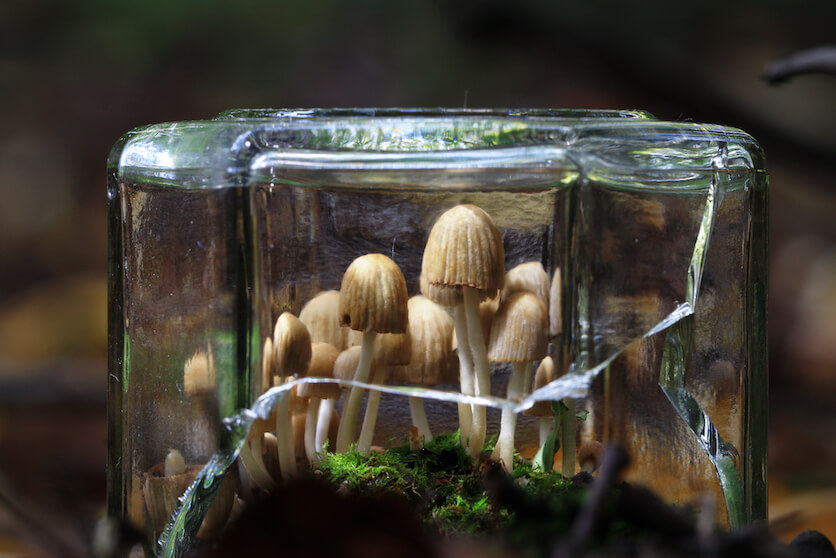
We have listed a few poisonous mushrooms to provide you with some insight on which ones to stay away from. Remember, there are thousands upon thousands of species which means there are many more.
By providing you with a few “red-flag” mushroom species, you can see how serious the side effects can be just by making a tea from the wrong mushroom. Furthermore, entrusting yourself or someone selling a mushroom tea must only come from skill in knowing all there is to know about differentiating safe vs. toxic mushrooms.
Mushroom |
Characteristics |
Toxin Level |
Side Effects |
| Deadly Webcap Cortinarius rubellus Native to Europe/Asia | Features:
| Contains Orellane toxin. Lethal | Symptoms may not appear for up to three weeks.
|
| Death Cap Amanita phalloides var. umbrina (Ferry) Maire Native to North American and Europe | Features:
| Contains Amanatoxins Lethal | Symptoms appear 6-24 hours after ingesting.
|
| Destroying Angel Amanita virosa Bertill. Native to North America and Europe | Features:
| Contains Amanatoxins. Lethal | Symptoms appear 6-24 hours after ingesting.
|
Amanita muscaria var. muscaria Native to North America, Europe and Asia | Features:
| Contains Muscimol and Muscarine toxins. Highly poisonous. | Symptoms of intoxication:
|
| Fool’s Webcap Cortinarius orellanus Fr. Native to Europe and North America | Features:
| Contains Orellane and toxin. Lethal | Symptoms may not appear for up to three weeks.
|
| Fool’s Funnel Clitocybe rivulosa (Pers.) P. Kumm. Native to Europe and North America | Features:
| Contains Muscimol and a deadly amount of Muscarine toxins. Lethal | Symptoms of intoxication:
|
| Panther Cap Amanita pantherina Native to Europe and North America | Features:
| Contains Muscimol and a deadly amount of Muscarine toxins. Letha | Symptoms of intoxication:
|
How Much Caffeine Is In Mushroom Tea?
Mushroom tea does not contain any caffeine because it is not made from the tea plant Camellia sinensis. Mushroom tea is what’s called a tisane (herbal tea) and not a true tea such as black, green, oolong, or rooibos. Now, if you do make your mushroom tea with a black or green tea base, it will have caffeine.
Is It Okay To Drink Mushroom Tea Every Day?
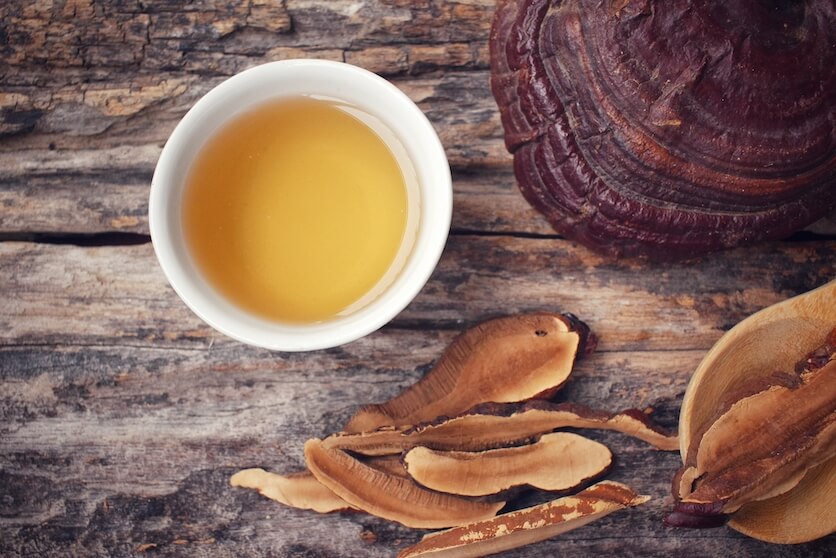
The amount and frequency of mushroom tea consumption safety depend on what species of mushroom the tea is made from and any side effects that may accompany ingesting or overindulging mushrooms in a tea. We don’t have the expertise in recommending mushroom tea or its use.
However, we can tell you that some particular mushroom teas can cause unwanted side effects. Chaga mushroom tea, for example, contains oxalates which are needle-like compounds; when ingested, oxalates can cause kidney damage. Another study done on Reishi mushroom tea found that the tea causes nausea and insomnia. So try to be careful with your brews!
Mushroom Tea Benefits
The diverse species of mushrooms used in tea also have diverse benefits. But those benefits are species-specific. We’ve only listed a few from the thousands of mushroom species.
Kombucha Tea Benefits
A study was done on black and green tea-based kombucha. Kombucha tea benefits are derived mainly from the use of black/green tea and not the kombucha bacterial component. Black and green tea contain polyphenols which are potent antioxidants. Polyphenols protect our internal organs from damage.
Reishi Tea Benefits
Researchers found that reishi mushroom tea drinkers benefit not only from the black or green tea added but also the mushroom’s bioactive molecules, proteins, polysaccharides, and amino acids. The tea was found to be beneficial for inflammation, stomach ulcers, blood sugar, and the immune system.
How To Make Mushroom Tea
Making mushroom tea is as simple as purchasing the right mushrooms or powder form and brewing a cup of it. There are numerous recipes online for this tea. However, use great caution in recipes with “magic” or “shroom” in them as they typically contain hallucinogenic mushrooms.
Spicy Reishi Tea
Ingredients
- Finely sliced reishi mushrooms (about as much that will fit in the palm of your hand)
- 1 tea bag (black or green tea)
- 2 cups of water
- Honey (to sweeten)
- A tiny pinch of cayenne pepper
Directions
- Bring water to a boil.
- Reduce heat to low and add mushrooms and cayenne.
- Simmer for 5 minutes.
- Remove from heat and drop the tea bag into the hot water.
- Steep for 5 minutes.
- Remove the teabag.
- Strain the mushrooms (unless you want them in your teacup)
- Pour the tea into your teacup.
- Add honey as desired, and enjoy!
There’s “Much” To Learn Before Drinking Mushroom Tea
You should now have enough basic information on mushrooms to form a jumping-off point to learn more. A little caution will go a long way in making a tea with mushrooms and may potentially save your life!
